Whether you reside in a warm climate and enjoy the outdoors daily or live in Northeast Ohio where rare warm temperatures beckon you outside for lawncare and cycling, being situationally aware and prioritizing safety ensures you make the most of beautiful weather days without any regrets.
Kevin Paul, Safety Director, sat down with us to talk about his best practices for staying safe during warm weather activities.
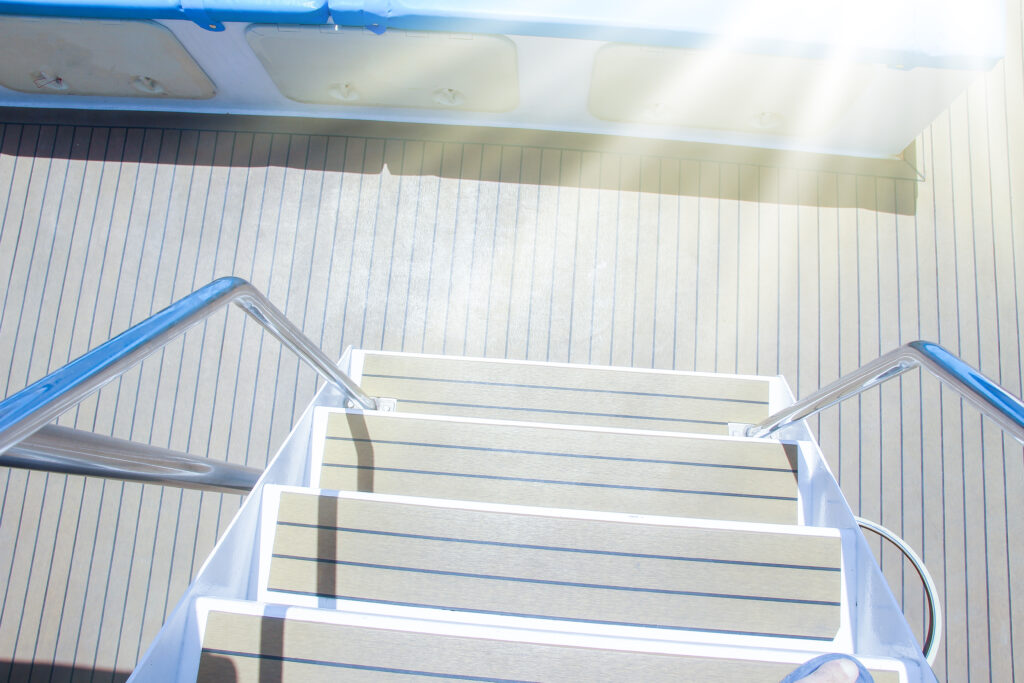
1. Accidental Falls
Whether it’s falling on a slippery pool deck or working at height without a spotter, according to the National Electronic Injury Surveillance System (NEISS), stairs, ramps, landings, and floors are the most common cause for injury.
Kevin says that when it comes to keeping surfaces safe to step onto, “You want to make sure there are treads and railings on stairs or near commonly slippery surfaces and that you consider the materials and paint you’re using on walkable surfaces. Keeping your hands free of objects allows you to maintain proper balance during your transition is also helpful.”
When it comes to stairs, it’s vital to make any change in floor elevation clearly visible. “Whether it’s adding a visual for the transition from a sliding glass door to a deck or contrasting floor materials like wood and vinyl to signal a change in floor height – it’s important others can see that.”
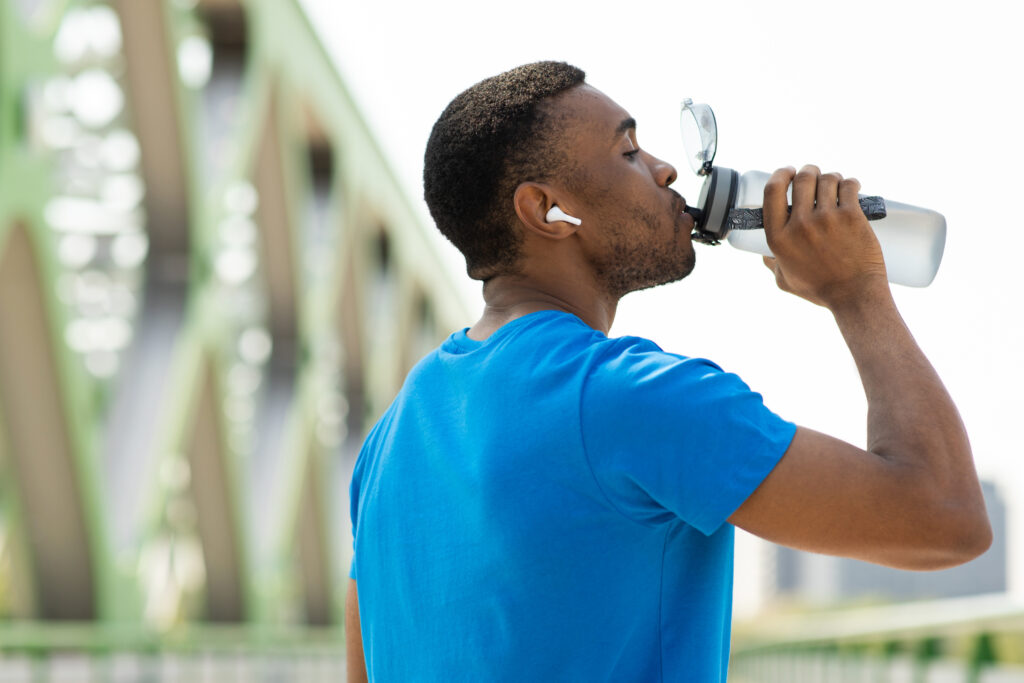
2. Heat Related Illnesses
Staying safe in warm conditions is all about understanding the hazard and having a plan to control the hazard. While everyone should be aware of how much water they’re drinking in a day, staying safe in the heat is more about continuously drinking water when working or playing in the heat. “The main thing is that you need to keep drinking water throughout the day. You should be drinking every 15 minutes, or 24-32 ounces per hour, to replenish what you’re losing.”
It’s also helpful to spot shaded areas before you start work so you can take breaks to cool down and to use fans when you can. He also said that staying away from heat related illnesses is all about the sun. “Whether you’re golfing or just outside in the sun, it’s important to use sunscreen and wear a hat. There are also a lot of lightweight clothing options out there that have built in SPF to protect you.”
While planning ahead and covering yourself from the sun is best, it’s also vitally important that people understand what the signs and symptoms of heat related illness look like. Symptoms such as headache, dizziness, nausea, and confusion should all be watched for when working or playing in the heat. The CDC offers a full list of symptoms and what to do here on their website.
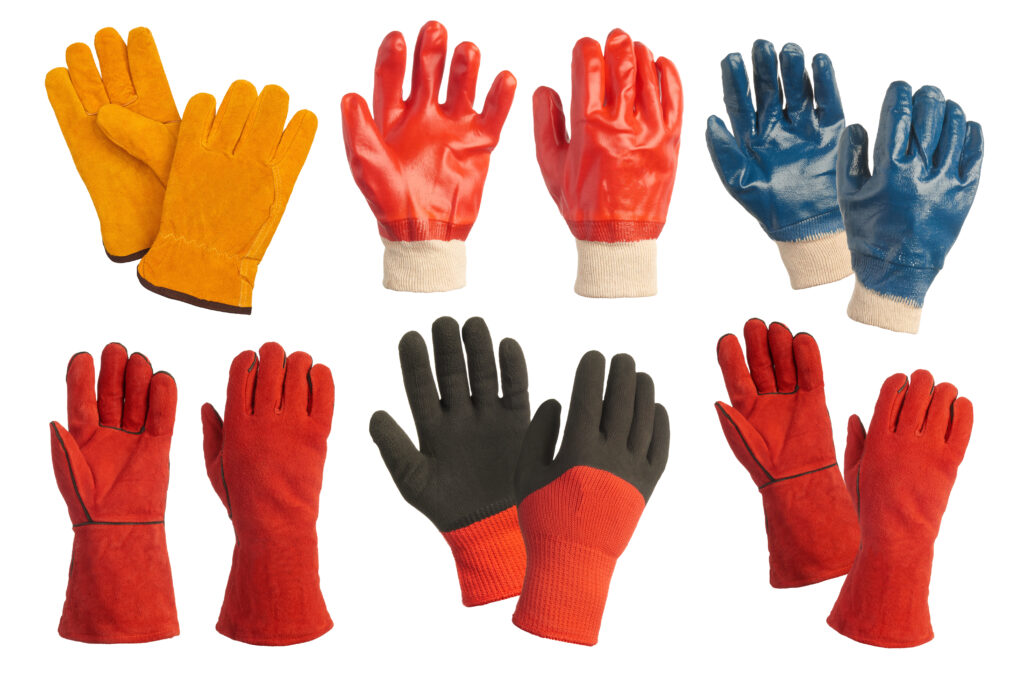

3. Cuts and Lacerations
Warm weather lends itself to more outside work, such as landscaping. One of the most effective ways to protect your skin is to first read the manufacturer’s instructions for any tool you’re using that could cut you. “The instructions are going to tell you what kind of personal protective equipment is needed.”
When it comes to gloves, Kevin says, “Using the right kind is key. Using cotton for gardening or to keep your hands clean during a task is fine. However, if you’re going to be working with anything that could cut or penetrate your skin, you need to make sure you’re using something like leather or another cut-resistant material to protect your hands.”

4. Burns and Scalds
When it comes to building bonfires or even small campfires, you need to consider many factors that may affect safety. “You always want to make sure you’re handling any hot material with a no touch tool, and you always want to make sure you’re using a tool that doesn’t put you closer to the fire because you never know what may pop off and shoot into the air.”
If you’re building an outdoor fire, be sure to build something around it to contain the fire, to keep your distance, and to be prepared for the worst. “If something gets out of hand, it’s important to have easy access to a nearby water source or keep a fire extinguisher on hand.”
Another element you should consider is the size of the fire you need for the job you’re doing. “You may rip a bush or a tree out and want to burn it. You need to ask yourself if it would make better sense to keep the fire small and constantly fed rather than burning it all at once and having an out-of-control fire on your hands.”
When it comes to being safe while grilling, Kevin said that aside from the proper no-touch tools used to flip or move items on the grill, it’s also important to consider wind conditions and be careful to not overload the grill. “If you’re grilling or burning something, you’ll want to set yourself up so that any smoke is headed in a direction that isn’t towards yourself, others, or your home and be sure not to put too much on the grill as that could cause excess grease which can lead to a fire.”

5. Drowning
Whether by the pool or sea, an important safety tip is to keep distractions at a minimum. “Remove those unnecessary items from the surface, like floats or tubes, because if they are unused, they take up space and make keeping a headcount hard. And put your phone down. A lot of times it doesn’t take long to get caught up in your phone and you could miss someone needing your help.”
Whether kids are swimming in a pool or you’re out on or in a sea, life vests are crucial. “Being outfitted in a vest and having a floating device on hand, especially when you’re on a boat or in a big body of water, is always best practice. On top of that, if you plan on going out into the water, be sure to talk about the different variables. You may assume that because someone is so tall or so old that they’re going to understand that there will be waves, winds, and currents that could make swimming harder than in a pool. It’s important to go over those things before you’re out in the water so everyone can stay safe.”

6. Allergic Reactions
Warmer months often offer the perfect opportunity to be in your garden or clearing out plant life. Awareness about what allergen-ridden plants look like before you begin a gardening project is always the best route to avoid an allergic reaction. “Make sure you’re wearing the right gloves, wear long sleeves, and be sure to launder any piece of clothing that the poisonous plant touches immediately so you don’t spread it.”
When it comes to allergies outside of plant life, it’s important that you have what you need to handle an attack easy to access on short notice. “If you or your dependents are allergic to certain foods or bee stings, be sure you and others at the event know where your medication is and how to administer it.”
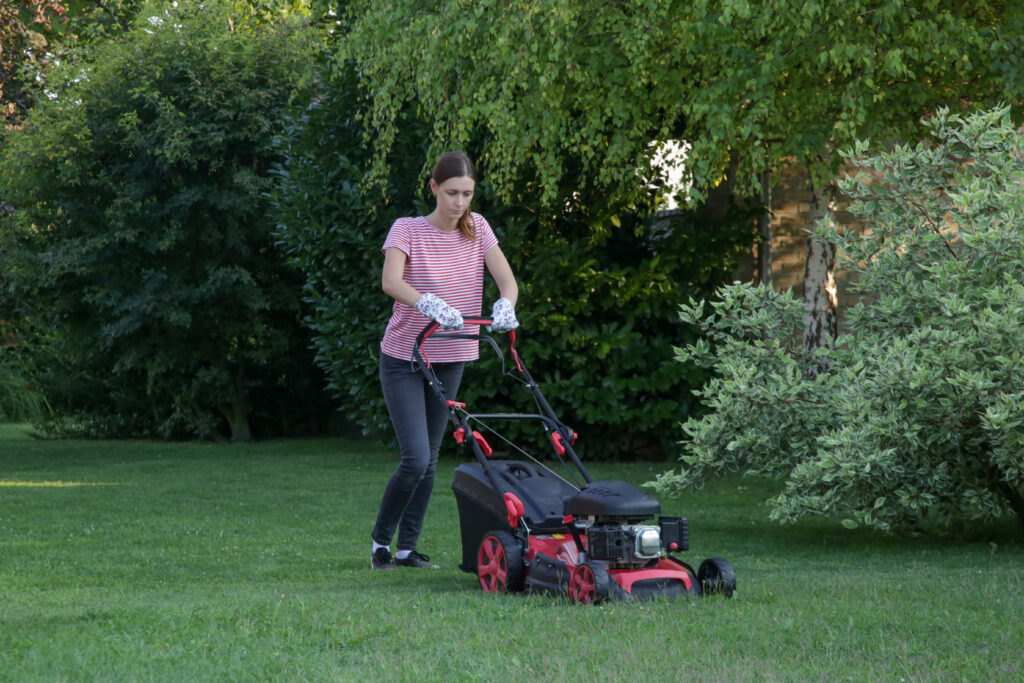
7. Equipment Accidents
When working with any powered equipment, it’s necessary to be sure you always power down a tool before doing any maintenance or repairs on it. “It could be that you’re working with a tool, and something gets clogged up. It’s always important you abide by the operator manual to turn it off and unplug it and take any other measures to power it down before doing any work. You never want it to unintentionally start back up with your hands in it.”
It’s also important to understand the intent of the tool before you begin a project. “If you have a 12-inch chainsaw but you really need a 24-inch one – don’t try to make it work. Tools aren’t always a one size fits all, and any shortcuts could cause injury.”
Another consideration is making sure guarding is in place on the tool being used. “If your hedge trimmers or lawn mower has a guard, it’s important not to remove it, for example you could risk objects flying back and hurting you when it’s in use. Those guards are in place for good reason”
Kevin also shared his best practices when using a push mower in a ditch. “It may seem easier to let the push mower go down into the ditch and pull it up to get the sides cut, but you could potentially slip bringing it back up which could cause serious injury if you get mixed up in the blades. Always walk it down and push it back up to ensure you’re not creating additional risk, for example you never want to pull the mower toward your body.”

8. Foodborne Illnesses
According to the Center for Disease Control (CDC), the most common foods to cause foodborne illness are meat, poultry, eggs, fruits, vegetables, raw milk products, seafood, leafy greens, sprouts, and raw flour. Being sure to wash any fruits or vegetables, choosing pasteurized milk products, saying no to eating raw baking doughs, and cooking eggs or meat before serving is always safest.
When it comes to setting out foods for get-togethers, it’s crucial to keep cold food cold and hot food hot. Bacteria can grow rapidly in what’s considered the “danger zone”, which is between 40-140 degrees Fahrenheit, even after something is completely cooked. Keeping hot or cold and storing any leftovers within two hours is vital to stay away from illnesses.
When it comes to meat handling for barbequing, the CDC recommends separating it from other foods, refrigerating it before grilling, washing your hands before and after handling it, being sure any juices don’t touch other food, utensils, or surfaces, and to use a thermometer. Kevin said investing in a thermometer is always best, “Before you pull your chicken or beef off the grill, you need to be checking the internal temperature of that with a thermometer.”
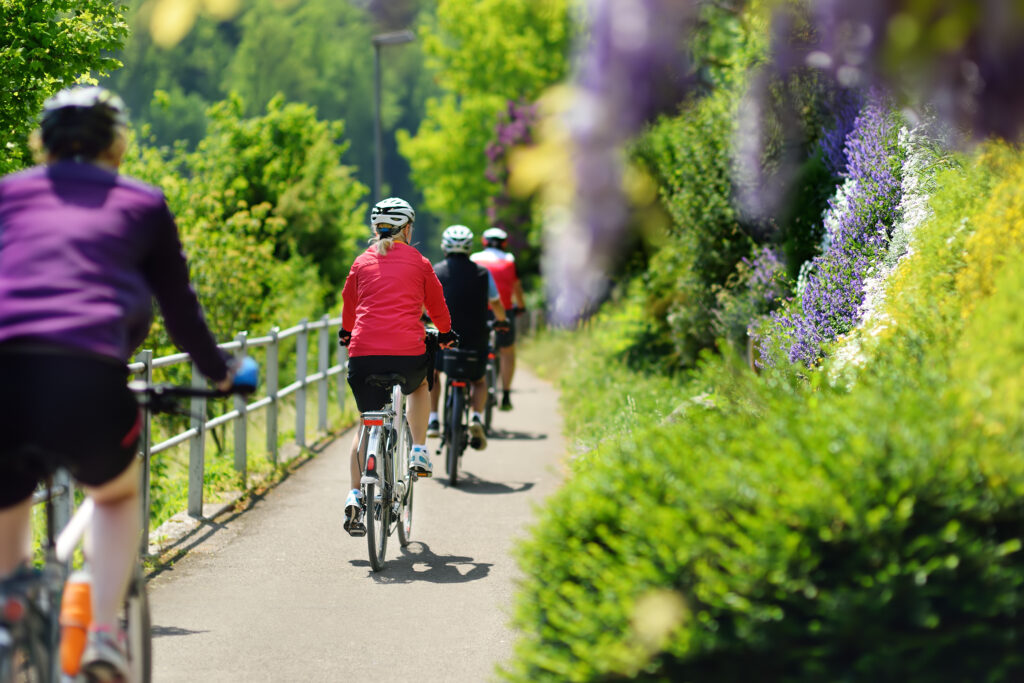
9. Bicycle Accidents
Kevin says that he always encourages using sidewalks and bike lanes opposed to main roads. “You also need to be mindful of going with traffic, following traffic signals, and never assuming that because you’re on a bike that you have more rights than traffic. It’s good to have a buddy system, too. If something goes awry, maybe you get a flat tire, you don’t want to be out there by yourself.”
Having access to water, taking breaks, listening to your body, and having a cell phone on your person are always recommended. “Depending on how regularly you bike, the physical exercise could catch up with you pretty quick and you want to prepare for that.”
Conclusion
As you enjoy your warm weather pursuits, situational awareness and a safety-conscious mindset will help guide you through each warm weather endeavor. Whether it’s cycling, barbequing, or enjoying the pool – enjoy your adventures under the sun!

